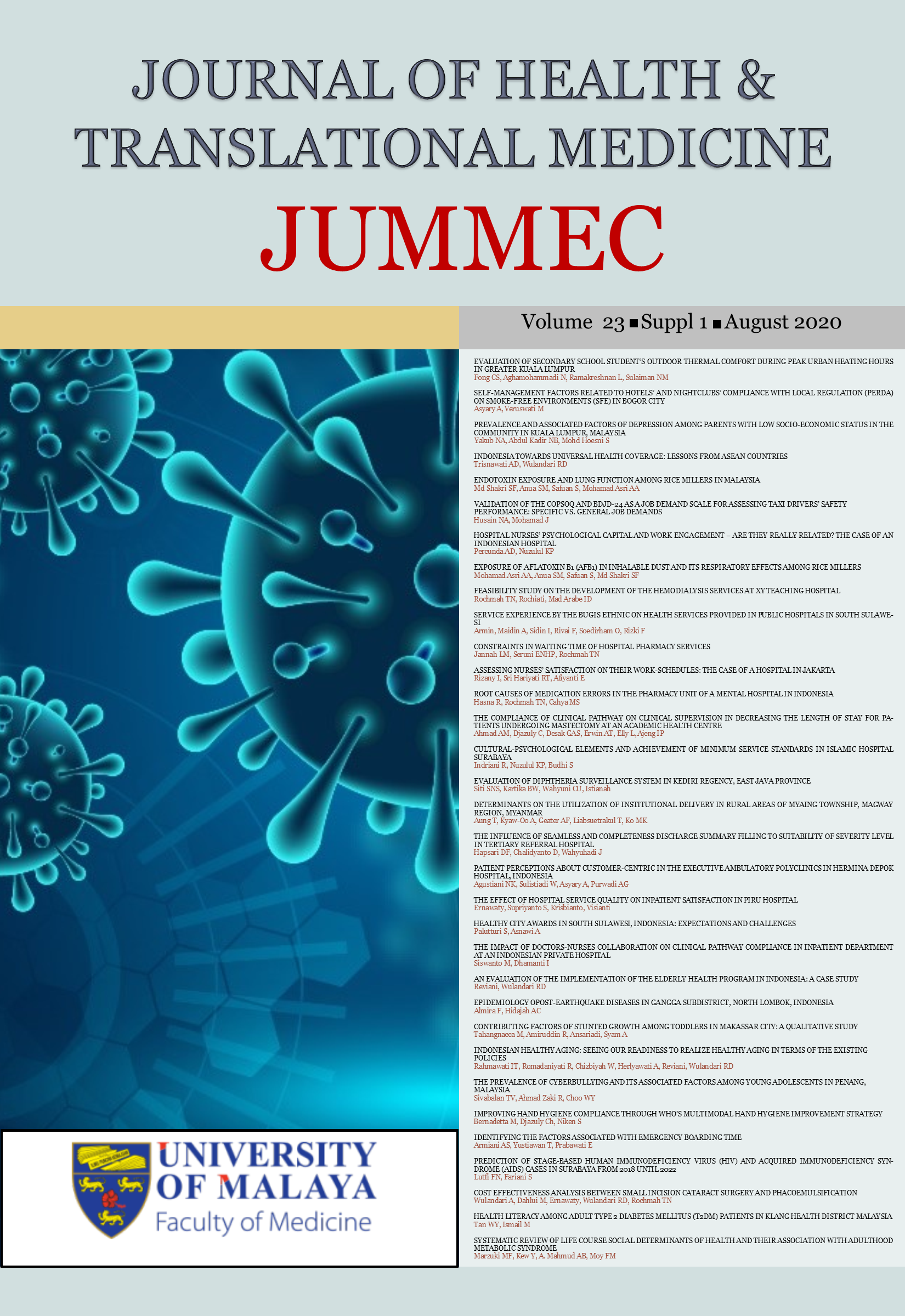DETERMINANTS ON THE UTILIZATION OF INSTITUTIONAL DELIVERY IN RURAL AREAS OF MYAING TOWNSHIP, MAGWAY REGION, MYANMAR
Keywords:
Place of delivery, Institutional delivery, Rural areas, MyanmarAbstract
Background: Institutional delivery is one of the most important interventions to reduce maternal and neonatal mortality, especially in low and middle-income countries. Increased maternal and neonatal mortality has a huge impact on the health and socio-economic status of families and society.
Aim: This study aimed to assess the utilization of institutional delivery among women of reproductive age in a rural area of Myanmar and explore its determinants.
Methods: A community-based cross-sectional study was carried out among 286 women aged 15–49 years with delivery in the year prior to the survey in Myaing township, Central Myanmar region, 2017.
Results: About two-thirds of the participants (60.1%, 95%CI: 55.6-65.9) utilized institutional delivery. Over three-quarters of the participants took antenatal (AN) care from a rural health centre and 73.8% from a midwife. In logistic regression analysis, adjusted for potential confounders, the odds of utilizing institutional delivery were four times for persons who took AN care with skilled birth attendants (OR 4.23; 95%CI 1.37, 13.10), over three times for those with low parity (OR 3.61; 95%CI 2.02, 6.46), and 1.83 times in those who could access labour room service easily (OR 1.83; 95%CI 1.10, 3.04) and in those living near to a health centre (OR 1.77; 95%CI 1.13, 2.98).
Conclusion: Even though the proportion of institutional delivery was higher than in other studies, health facility delivery still needs to be promoted to cover all childbirths. Taking AN care with skilled birth attendants should be made a priority to promote the utilization of institutional delivery.
Downloads
Downloads
Published
Issue
Section
License
All authors agree that the article, if editorially accepted for publication, shall be licensed under the Creative Commons Attribution License 4.0 to allow others to freely access, copy and use research provided the author is correctly attributed, unless otherwise stated. All articles are available online without charge or other barriers to access. However, anyone wishing to reproduce large quantities of an article (250+) should inform the publisher. Any opinion expressed in the articles are those of the authors and do not reflect that of the University of Malaya, 50603 Kuala Lumpur, Malaysia.


